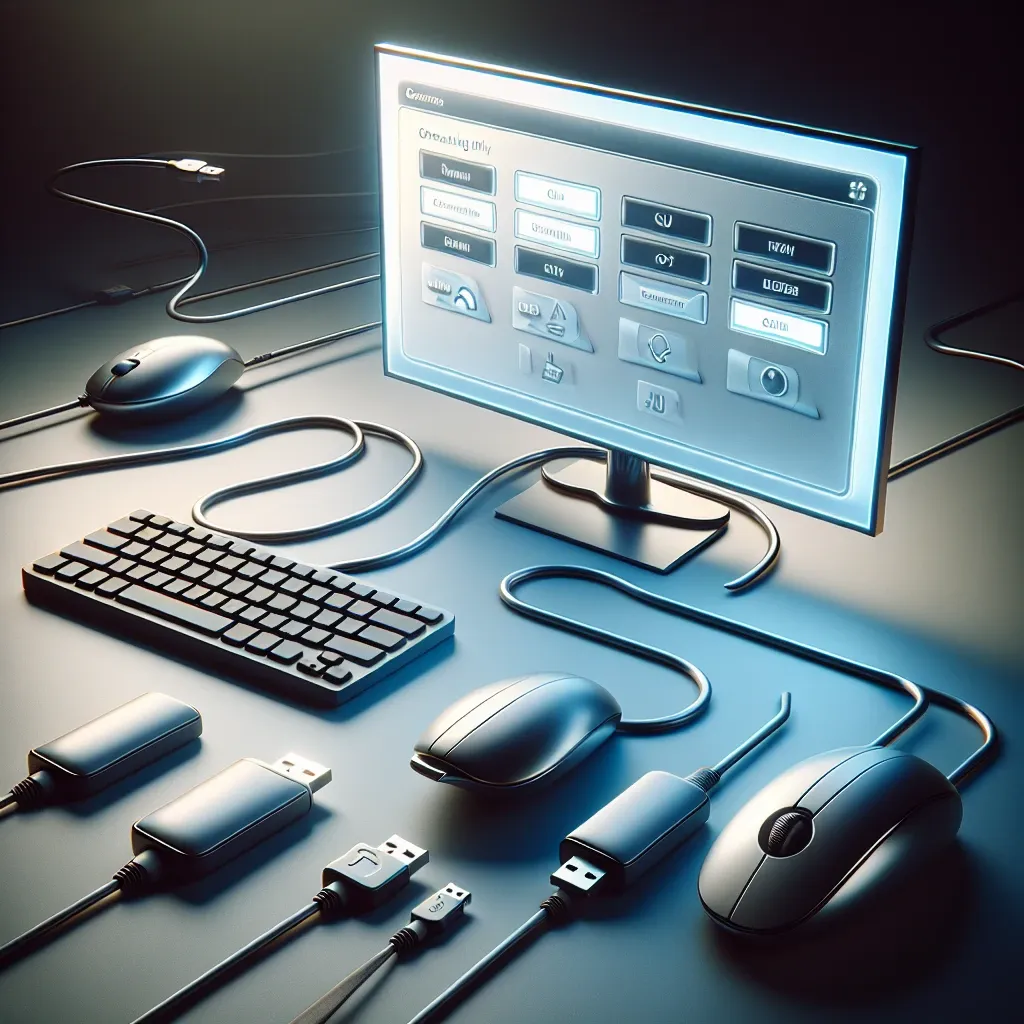As smart TVs continue to evolve, they offer a plethora of capabilities, including web browsing, gaming, and streaming content. With this expanded functionality, many users wonder if they can enhance their experience further by connecting peripherals like keyboards and mice. Specifically, the question arises: Can I use a USB expander to connect a keyboard and mouse to a smart TV? In this article, we will delve into the practicality of using a USB expander with your smart TV, discussing compatibility, setup, benefits, and alternative solutions.
| Item | Description |
|---|---|
| USB Expander | A device that allows multiple USB devices to connect to a single USB port. |
| Smart TV | A television set that combines features of a computer and a TV, allowing for Internet connectivity and app downloads. |
| Keyboard and Mouse | Input devices that offer easier navigation and control for smart TV functions. |
Understanding USB Expanders
A USB expander is essentially a device that provides additional USB ports from a single USB outlet on a device. They come in various forms, including hubs with multiple ports or extension cords. The primary use of a USB expander is to increase the number of available USB connections without requiring multiple direct ports.
How USB Expanders Work
USB expanders work by allowing multiple USB devices to connect to one port. They typically have a limited power supply to ensure all connected devices function properly. When using a USB expander, it’s important to consider:
- **Power Requirements:** Some devices may require more power than the expander can supply.
- **Compatibility:** Not all USB expanders are compatible with every device.
- **Speed Restrictions:** Data transfer speeds may decrease when using multiple devices through a single port.
Connecting a Keyboard and Mouse to a Smart TV
As smart TVs typically come with limited ports, connecting a keyboard and mouse easily can enhance user experience significantly. The benefits of using a keyboard and mouse with your smart TV include:
- **Easier Navigation:** Browsing through applications and settings can be cumbersome using a remote.
- **Typing Efficiency:** Entering text is much easier and faster with a keyboard.
- **Gaming Experience:** For gamers, having a mouse and keyboard can provide a better gameplay experience.
Compatibility with Smart TVs
Before attempting to connect a keyboard and mouse to your smart TV using a USB expander, it is crucial to verify compatibility. Here are factors you need to check:
- **USB Ports:** Ensure your smart TV has available USB ports. Many smart TVs come equipped with at least one USB port.
- **Supported Devices:** Check the TV’s user manual or manufacturer’s website to see if it supports external input devices like keyboards and mice.
- **Driver Support:** Some smart TVs may need specific drivers for certain keyboards or mice to function correctly.
Using a USB Expander with a Smart TV
If your smart TV supports USB peripherals, using a USB expander can be a viable option. Here’s how to set it up:
Step-by-Step Setup
- Gather Your Equipment: Get the USB expander, keyboard, and mouse.
- Connect the USB Expander: Plug the USB expander into an available USB port on your smart TV.
- Attach Peripherals: Connect your keyboard and mouse to the expander.
- Power On: Turn on your smart TV and test the keyboard and mouse functionality.
What to Expect
Upon connecting the keyboard and mouse, you should experience seamless navigation. However, performance may vary based on:
- **USB Expander Specifications:** Some expanders have limitations, such as power supply and speed.
- **Smart TV Model:** Older models may not recognize keyboard and mouse inputs as expected.
- **Peripheral Compatibility:** Some keyboards or mice may require specific drivers or may not work altogether.
Benefits of Using a Keyboard and Mouse with Your Smart TV
While the implementation of a USB expander can have challenges, using a keyboard and mouse offers several tangible benefits:
- Increased Productivity: Ideal for tasks like web browsing and email checking.
- Improved Gaming: Offers precision and speed over traditional remotes.
- Enhanced Accessibility: Useful for individuals who may struggle with remote control navigation.
Alternative Solutions for Connecting Peripherals
If you encounter compatibility issues with a USB expander, consider these alternative methods to connect a keyboard and mouse to your smart TV:
Bluetooth Connections
Many modern smart TVs offer Bluetooth capabilities. If your keyboard and mouse are Bluetooth-enabled, pairing them can be a seamless solution without the need for USB expanders.
Wired Connections without Expander
If you have multiple USB ports available on your smart TV, you can connect peripherals directly without needing an expander. This simplifies the process and eliminates potential issues with power and performance.
Dedicated Smart TV Remote Apps
Many smart TVs come with dedicated remote applications for smartphones, allowing for touch-based controls which can function similarly to a mouse and keyboard.
Troubleshooting Common Issues
If you already attempted to connect your keyboard and mouse using a USB expander and ran into problems, here are some common issues and troubleshooting tips:
- Device Not Recognized: Ensure your devices are compatible with your TV’s USB specifications.
- Insufficient Power: Some USB expanders require an external power adapter to function optimally.
- Lag or Disconnection: Check the quality of the USB expander and cable connections.
Final Thoughts
Using a USB expander to connect a keyboard and mouse to your smart TV can enhance your overall experience significantly. However, it is essential to check for compatibility, power supply issues, and potential performance limitations of your selected USB expander. If you find challenges with this method, exploring alternative ways such as Bluetooth connections or direct wired connections could be the best route.
Ultimately, by leveraging the functionality of keyboards and mice, you can take full advantage of your smart TV’s capabilities, turning it from just a viewing device into a fully interactive multimedia hub.

